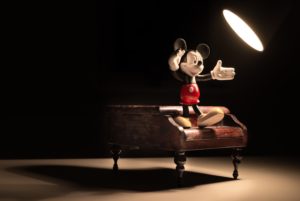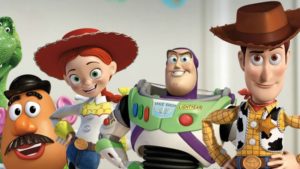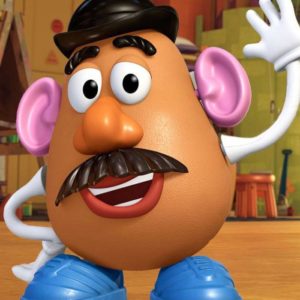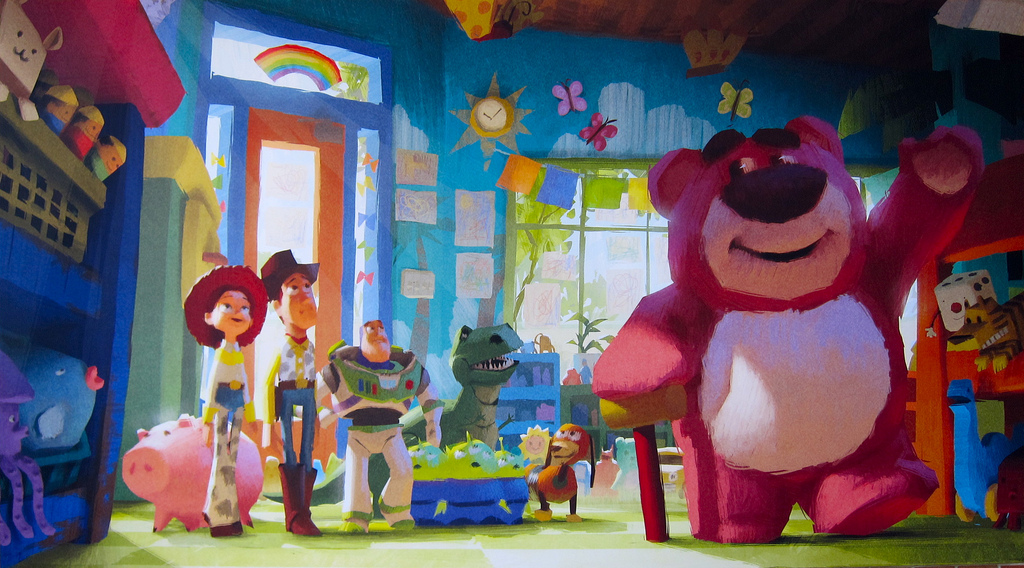When you think about animation, what companies or characters come to mind? Many people may rightfully say Disney for its extensive lineup of timeless stories and characters. Yet while I’ve always enjoyed the magic and joy of Disney, I’ve always been more of a Pixar guy.
Now despite the two being longtime partners, Disney and Pixar are very different in terms of styles and character. Disney takes a more traditional approach with classic fairytale settings, princesses, musical numbers, magic, etc.
Pixar, on the other hand, focuses on the more abstract concepts and characters like toys, cars, monsters or even emotions themselves. Both studios are known for pushing the envelope of what animated films can achieve in terms of story, character and spectacle.
However, when comparing the two studios back to back, Pixar arguably possesses the most consistently excellent lineup of films. While Disney has released plenty of screw ups, Pixar has only really had one or two films that could be considered failures.
With the release of “Toy Story 4” looming around the corner, I figured what better way to celebrate Pixar’s 21st film than by reviewing every single Pixar film leading up to “Toy Story 4.”
During this Pixar Palooza (which starts here and will continue periodically on the Clarion website), I will be looking over all theatrical Pixar releases. Short films and direct to DVD movies will not be considered. With that being said, let’s look at the first Pixar film and possibly the most important animated film ever made, “Toy Story.”
Now I’d like you to pretend for a moment that you’re a regular moviegoer in 1995. The use of new revolutionary CGI is everywhere and getting old fast. Sure movies like “Jurassic Park” and “Terminator 2” are undeniable classics, but then like most fads, it is overexposed and will soon be dated.
And CGI is mostly used to save money on showing big monsters, storms, explosions, etc. After all, why spend millions of dollars on practical effects when you can simply use a computer to bring to life whatever you want.

So with the overuse of CGI bogging down films in the mid to late 90s, certainly you’d begin to tire from films like “Twister” or “Independence Day.” So imagine how bizarre it was when the first fully computer animated film was not an action movie, but rather a children’s film.
With its bright colors and almost too simplistic premise, everyone thought Pixar’s “Toy Story” would sink and sink fast. However, like all the great cinematic masterpieces, it not only soared with flying colors but completely revolutionized the entire film industry.
So for the two of you out there who aren’t familiar with this tale, I’ll fill you in. Long before the days of the I-Pad, a little boy named Andy (John Morris) spends his days using his imagination and playing with toys (Remember those days, I miss those days).
His favorite toy is a cowboy doll named Woody (Tom Hanks). The two do everything together, or at least as much as they can within the 2:05 minute duration of “You’ve Got a Friend in Me.”
However, when Andy leaves his room, the rest of his playthings come to life and interact in a secret society full of memorable characters like Hamm the piggy bank (John Ratzenberger), Mr. Potato head (Don Rickles), Slinky Dog (Jim Varney), the list goes on.
All seems well for Woody and the gang, until Andy’s birthday approaches and everyone except Woody is panicked that they might be replaced by a newer toy. One of these newer toys is the high tech Buzz Lightyear (Tim Allen), who quickly becomes one of Andy’s favorites.
But things get even more complicated because unlike all the other toys, Buzz truly believes himself to be the fictional space ranger his toy is based on. Despite his delusions, he becomes very popular among the other toys and with Andy.
Naturally, this makes Woody unbelievably jealous and he devises a plan to get rid of him. When one of his schemes goes too far, Buzz is flung from the window and Woody is accused of murder by the other toys. Eventually after a mix up at a gas station, both Buzz and Woody end up being left by Andy and naturally don’t get along.

From here, the two are forced to work together and embark on a perilous adventure back home to Andy before his family moves away.
While the computer animation was truly revolutionary at the time (and still looks pretty good today), what makes this film so great is Pixar’s brilliant writing. The concept of toys coming to life is nothing new and has been done countless times in movies and TV shows before 1995.
So for Pixar to take a rather childish idea and put such a clever and unique spin on it that is still entertaining 24 years later, speaks volumes of John Lasseter (the film’s director and the founder of Pixar) and his team of incredible writers.
It also broke many stereotypes of what animated movies were. Before Toy Story, animated movies, Disney or not, were mostly told in fairytale settings with fairytale characters. Sure, films like Disney’s “Aladdin” attempted to add a modern spin to older tales, but even then it often came off as kind of forced. And the few non-fairytale animated films like “Batman: Mask of the Phantasm” or “Oliver and Company” didn’t typically do very well at the box office.
“Toy Story,” with its modern day settings and semi-crude dialog, really broke this mold and proved that animated movies didn’t have to feature princesses, castles or talking animals to blow our minds.
The characters in Toy Story are among the most recognizable and beloved icons of pop culture as well as cinema as a whole. Tim Allen and Tom Hanks make for one of cinema’s most beloved animated duos in history.

And side characters like Mr. Potato Head and Rex (Wallace Shawn) have become some of the most memorable supporting characters in any animated movie from Pixar or Disney.
My only real nitpick would be the animation on the humans and the dog. Now to be fair, it was the first fully computer animated film. However, it’s still hard to ignore the uncanny expressions and arm flailing. But this is really just a nitpick, as even the human characters, while not the most interesting or the most believably animated are still relatable.
A character like the neighbor kid Sid, who enjoys blowing up and destroying toys, is still very identifiable. As a child, you either knew this kid or perhaps you even were this kid yourself. And Andy and his mom, while quite bland, are still a rather believable family.
What more is there to say? It’s just a near perfect movie. With game changing animation and a wonderfully creative script, “Toy Story” truly set the precedent for all animated films (along with all films in general) to follow. And with that, the great 3D animated revolution had begun.
Check out the Clarion website for extra content and the next installments of Pixar Palooza.
 Samuel Claude
Samuel Claude
Associate Editor

